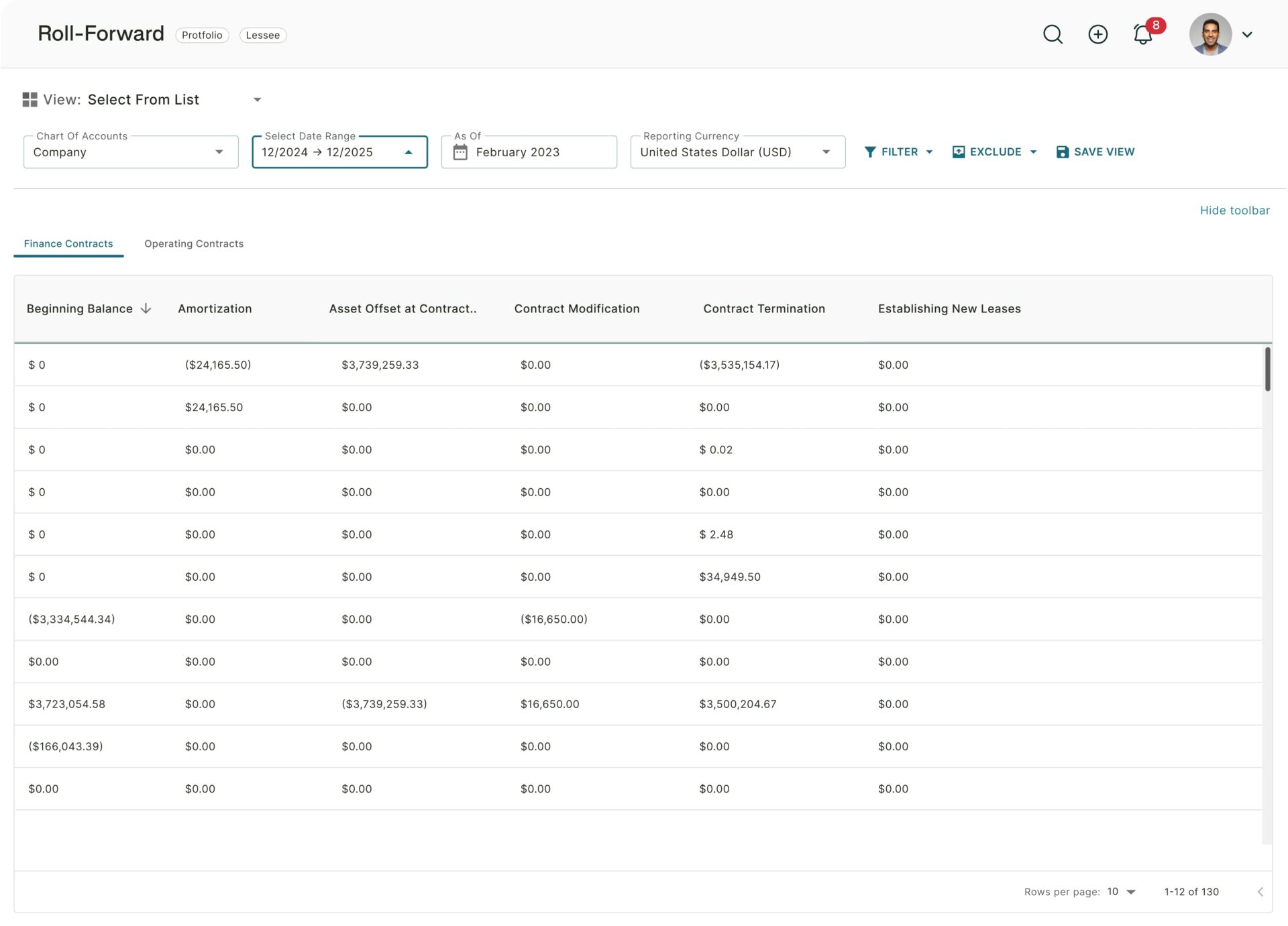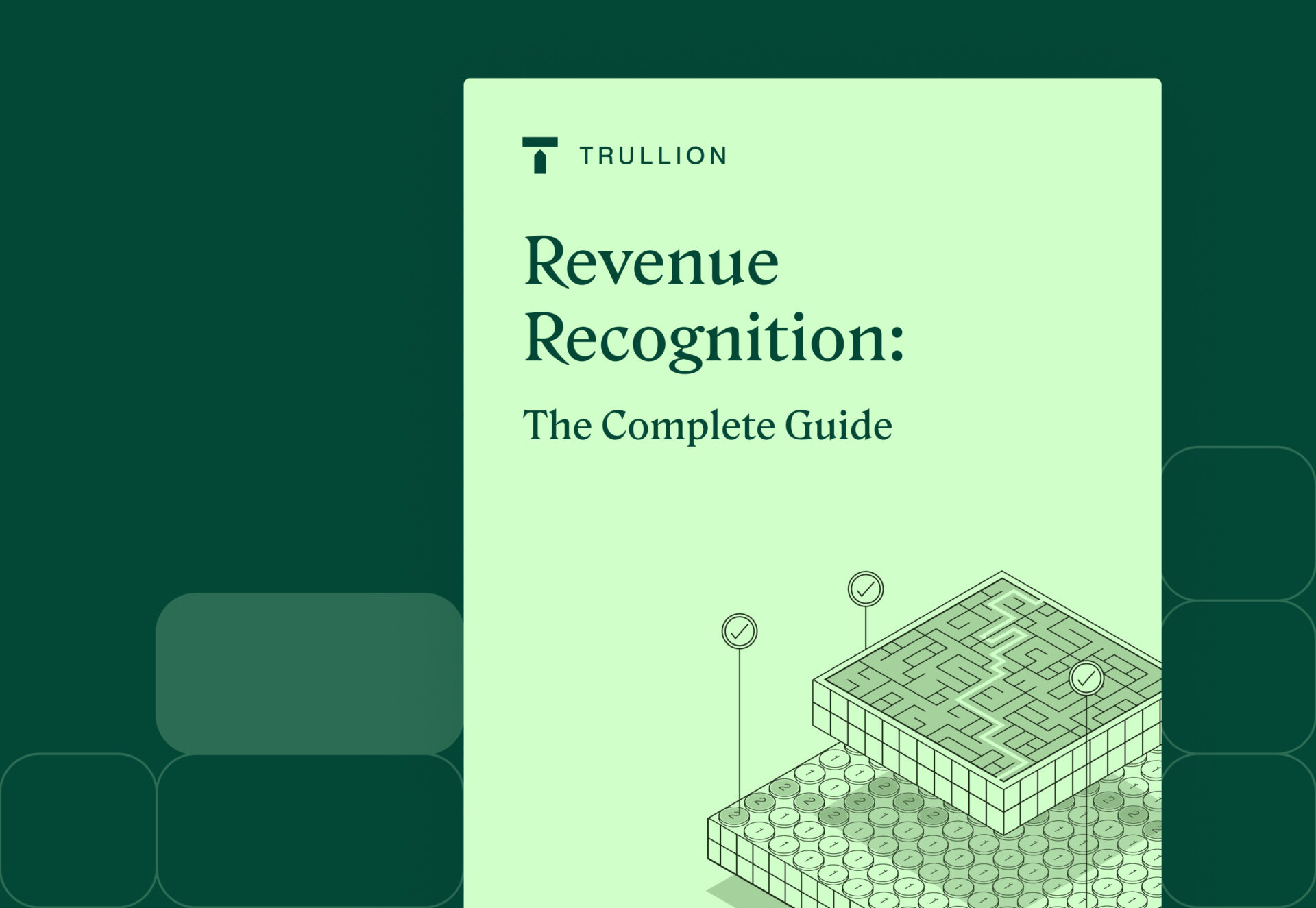Recognizing revenue can be a difficult task, given that it is a relatively new area of accounting and an integral part of financial statements. As such, it is an area of great concern for auditors, analysts, and other third parties. To avoid potential complications and ensure accuracy, Revenue by Trullion provides a transparent, automated solution for recording company revenue. This eliminates manual errors, speeds up the time-to-close process, and accommodates increasingly complex pricing, contract terms, and product bundles.
1. What is Revenue Recognition?
Revenue recognition is the accounting principle that governs when and how much revenue can and should be recognized by an entity. Modern-day accounting is based on the accrual basis, rather than the cash basis – and this is especially relevant when it comes to revenue. Often, revenue is not earned at once, but rather over time, according to the performance of agreed-upon obligations. For example if you take an upfront payment for an annual license for your SaaS (Software-as-a-Service) platform, even if you receive the money immediately you have only “earned” that revenue as you deliver the software service over the next twelve months.
Accounting standards have codified this into the way that organizations are allowed to recognize revenue, through topics and standards such as ASC 606 and IFRS 15, which technically refer to revenue recognition as “Revenue from Contracts with Customers”.
Under the GAAP framework, revenue recognition is a critical principle that requires revenue to be recorded in the income statement when it is realized and earned, irrespective of the cash receipt timing. This principle, central to the accrual basis of accounting, ensures that the financial statements accurately reflect a company’s economic activities within a specific period.
Specifically, GAAP outlines that for revenue to be considered realized and earned, the associated goods or services must have been delivered or rendered, and the company must have a reasonable expectation of payment. This approach contrasts with cash basis accounting, where revenue is recognized only upon the receipt of cash.
2. Revenue Recognition Standards
There are two major revenue recognition standards, ASC 606 and IFRS 15.
ASC 606
ASC 606, which is set by the Financial Accounting Standards Board (FASB) governs public and private companies, as well as nonprofits, in the United States.
IFRS 15
IFRS 15 is an international standard, set by the International Accounting Standards Board (IASB) and International Sustainability Standards Board (ISSB). IFRS standards are required in 167 countries, essentially all developed countries other than the U.S.
Both standards seek to increase standardization and comparability, while reducing complexity.
There are some differences between the standards; these have to do with, among other things, non-cash considerations, certain contract costs, and sales outside of ordinary activities.
3. Revenue Recognition Terminology
There are some key terms featured in the standards that are essential to understand in order to effectively comply with revenue recognition requirements.
These include:
- A contract: A contract is an agreement between two or more parties that creates enforceable rights and obligations
- A customer: a party that has contracted with an entity to receive goods or services, that are a normal part of that entity’s business, for a consideration (i.e. a quid pro quo, usually a financial payment)
- Performance obligation: this is a promise, in a contract with a customer, to provide a good or service
- Transaction price: the price at which an entity expects to be compensated for providing goods or services to a customer
4. 5 Steps of Revenue Recognition
The new revenue recognition standards have outlined 5 steps in recognizing revenue. These are (606-10-05-4):
- Identify the contract(s) with a customer
- Identify the performance obligations in the contract
- Determine the transaction price
- Allocate the transaction price to the performance obligations in the contract
- Recognize revenue when (or as) the entity satisfies a performance obligation
5. Revenue Recognition Compliance
Revenue Recognition for Public Companies
Public companies must follow GAAP and comply with FASB-mandated standards, such as ASC 606. The SEC enforces this, requiring that public companies submit FASB-compliant audited financial statements.
Revenue Recognition for Private Companies
Private companies are not required to follow GAAP, or generally accepted accounting principles. Therefore, they are technically not bound by ASC 606. However, the vast majority of private companies do choose to follow GAAP and therefore will need to comply with ASC 606. For companies that want a loan, or a full audit, or may want to go public at some point in future, complying with GAAP is critical.
6. General Revenue Recognition Overview
In 2001, the IASB (International Accounting Standards Board) noted that revenue recognition was going to be a key future project. By 2002, the organization joined with the FASB to create a joint project. This was momentous because it was one of the first times that these two Boards purposefully created a unified standard. Though there are minor differences in ASC 606 and IFRS 15, the main principles are the same.
It was only in 2008 that a paper was published titled “Preliminary Views on Revenue Recognition in Contracts with Customers,” followed by an exposure draft in 2010.
In May of 2014, the IASB together with the FASB issued converged guidance on recognizing revenue in contracts with customers.
The effective date by which organizations need to comply with the standards, particularly ASC 606, depends on the time of organization. In 2015, an Accounting Standards Update or ASU was issued, deferring the effective date by a year. This meant that public organizations would have to apply the new standard to annual reporting periods beginning after December 15, 2017. There was a further deferral for certain company types as a result of a number of factors including the COVID pandemic.
7. Rules for Revenue Recognition
In terms of general revenue recognition criteria, there are 5 that have to be met in order to recognize revenue. Here are the revenue recognition criteria:
- The parties to the contract have approved the contract, and are committed to its obligations. Approval is based on how such approval is generally granted, and can be orally or in writing.
- Each party’s rights to the goods or services that will be transferred can be identified
- Payment terms are clear and identifiable
- The contract has commercial substance, defined by having a future impact on the risk, timing, or amount of future cash flows
- It is deemed probable that “substantially all” of the consideration receivable for transferring the goods or services, will be received
It must be emphasized that all of these conditions must be met in order for revenue to be recognized.
8. Revenue Recognition FAQs
Q: Why was there a need for new revenue recognition standards?
A: According to the FASB, there was a need to:
- Remove inconsistencies and weaknesses in existing revenue requirements
- Provide a more robust framework for addressing revenue issues
- Improve comparability of revenue recognition
- Provide more useful information to users of financial statements
- Simplify the preparation of financial statements
Q: What happens to the portion of payment received that is not defined as revenue per the requirements?
A: This is taken into account as deferred revenue, and is then recognized as revenue is “earned” i.e. as the performance obligations per the contract are carried out.
9. Revenue by Trullion
Built using advanced AI technology, Revenue by Trullion offers a flexible workflow that allows you to set your product and pricing strategy without restrictions. The solution is also easy to deploy and use, allowing you to focus on what’s most important.
Only with Revenue by Trullion can you get:
- All of your source data in one secure location
- Contract file format flexibility (PDF, CSV, MS Office, etc.)
- Custom rules, templates and bulk actions, for tailored workflows
- Remote access, with secure permission controls
- One-click export and disclosure report creation
- Easy integration with ERPs and billing systems
To experience the magic of Trullion, and get the revenue recognition experience of the future, get in touch with a revenue recognition expert.





